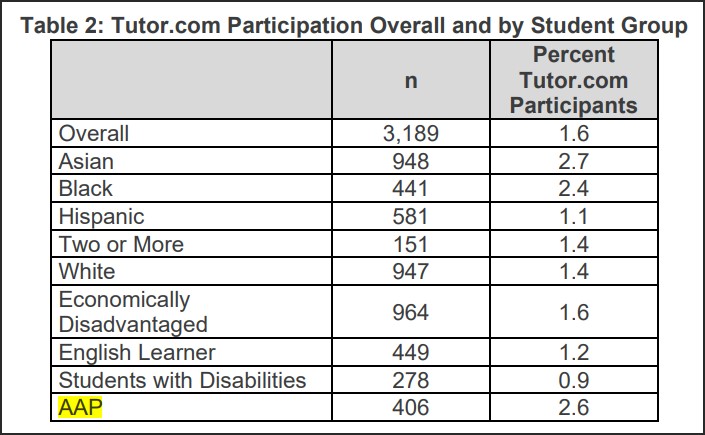by James A. Bacon
In an effort to overcome “catastrophic learning loss” among Virginia school kids over the past five years, Governor Glenn Youngkin has ramped up efforts to recruit more tutors. This morning, for instance, he announced a tutoring partnership between the Urban Leagues of Hampton Roads and Greater Richmond, and the state’s four Historically Black Colleges and Universities (HCBUs).
Finding more tutors is a great idea. It would be a wonderful thing if every child who wanted help catching up to grade level could find one-on-one help. But it’s important to set realistic expectations. Not every child who needs help takes advantage of it.
Fairfax County used $488,000 in federal funds to partner with Tutor.com to provide free online tutoring to help students overcome “unfinished learning” last spring, reports WTOP News. But only a tiny percentage of Fairfax County students used the service when it was rolled out in April, and those who did often needed it the least.
“When tutor.com access became available, the large majority of students did not access Tutor.com services,” wrote the county’s Office of Research and Strategic Improvement in a study released last month. “Of those that did, they accessed Tutor.com for limited time.”
Only 1.6% of the Fairfax County student population accessed the platform for learning support, with a median of 29 minutes.
Here’s the kicker: “Asian students and AAP students were disproportionately overrepresented in participation data…. Students who were not identified as needing academic intervention accessed the resource to a greater extent than those who were identified.”
“Overall, these results suggest Tutor.com is primarily fulfilling an enrichment function rather than an academic intervention function,” the report said.
The report recommended that Fairfax schools increase communication about Tutor.com as a resource for struggling students and continue to monitor the use of the resource, the cost of which worked out to an average of $130 per tutoring hour.
Bacon’s bottom line: Remember the debate over the admissions system at Fairfax County’s elite Thomas Jefferson High School? A common criticism of the old merit-based system, which was based on a test, was that Asian families were disproportionately likely to pay for tutoring. Isn’t it interesting that when free tutoring services were made available to the general school population Asian kids were the most likely to use them — even though they were less likely to need them!
It turns out that some kids are more motivated — or perhaps motivated by their families — to succeed than others.
The only silver lining in the report is that Black students, though less likely to avail themselves of tutoring than Asians, were more likely than Whites and Hispanics to do so. It is not clear from the data, however, how many of those Black students were educationally at risk.
Regardless of the racial/ethnic breakdown, only a tiny fraction of economically disadvantaged students took advantage of the free tutoring. Forty-three percent of economically disadvantaged students in Fairfax County Public schools failed to pass their English Standards of Learning (SOL) exams in 2021-22, while 47% failed to pass their math exams, according to Virginia Department of Education data. Remarkably, only 1.6% of economically disadvantaged students used the free online tutoring resource.
Hopefully, participation in Tutor.com will improve as awareness of the program increases and students have the opportunity to access it early in the school year before they have gotten discouraged and fallen behind.
Likewise, we can hope that in-school, face-to-face tutoring programs will achieve greater buy-in than an online resource. But the Youngkin administration — and everyone else — needs to set realistic expectations of what tutoring can accomplish. Sometimes the problem doesn’t reside with the teachers or schools. Sometimes it’s the students and their families. You can’t make a student learn if he or she just doesn’t care.
